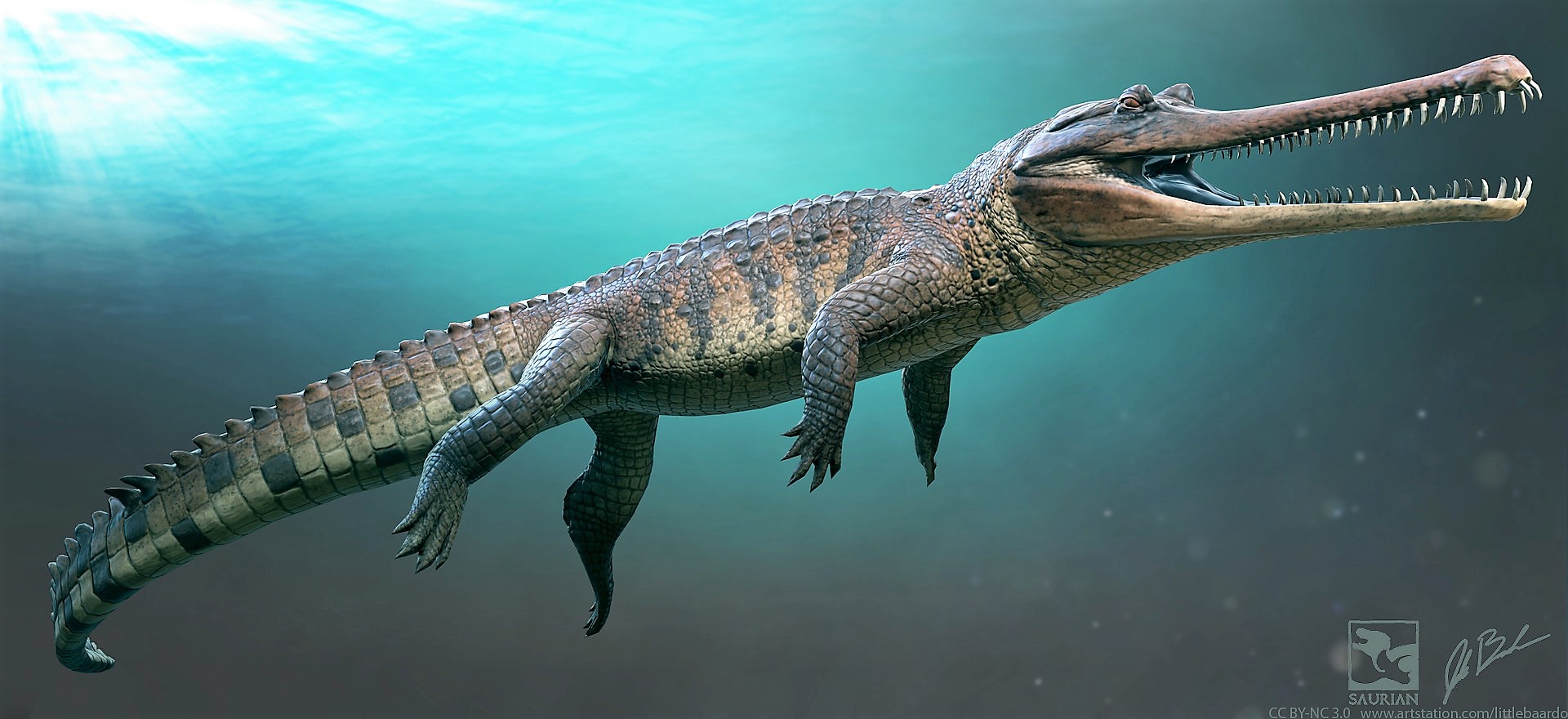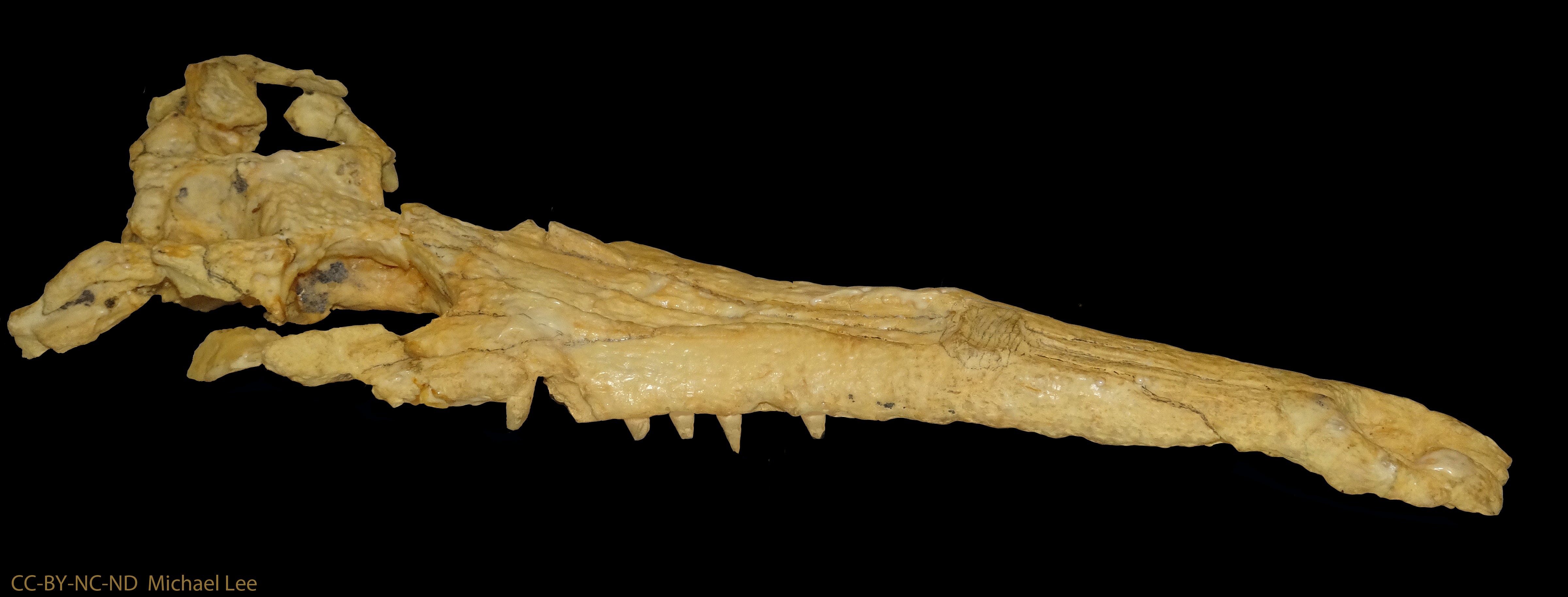
The fearsome Thoracosaurus, a dinosaur-era reptile from North America with jaws like giant pincers, bears an uncanny resemblance to a modern fish-eating croc called a gharial.
However, new research led by Flinders University shows that these similarities are all due to convergent evolution, which has repeatedly fooled scientists trying to reconstruct the family tree of crocodiles.
The Indian gharial and ‘false’ gharial both have long, narrow snouts for grabbing fish underwater.
Their similar DNA demonstrates that both gharials are close relatives – hence the so-called ‘false’ gharial is actually a true gharial.
The genetic evidence further suggests that gharials are a very young group that evolved alongside modern mammals, perhaps 30 million years ago.
This scenario is at odds with the occurrence of ancient gharial-like fossils from the Mesozoic era called “thoracosaurs”, which lived more than 70 million years ago.
A new study in Proceedings: Biological Sciences has resolved this dilemma, using new Bayesian techniques for inferring evolutionary trees which, unlike other methods, take into consideration both the anatomy and geological age of fossils.
These analyses show that the ancient thoracosaurs are not closely related to living gharials after all, but are a totally separate group of ancient reptiles which had adopted a similar fish-eating lifestyle, and evolved pincer-like snouts to match.

Thus, as predicted by the DNA data, gharials did not exist in the Mesozoic; the presumed fossils were merely gharial mimics.
“The DNA of living gharials indicates they are a young group, which evolved well after the dinosaurs – but then why are there gharial-like fossils older than T-rex?” says lead author Professor Michael Lee, from Flinders University and the South Australian Museum.
“Either the DNA evidence is wrong, or we’ve misinterpreted these ancient thoracosaurs.”
“Our work suggests we’ve got the fossils wrong, after being misled by convergent evolution.”
Convergent evolution is when animals in similar habitats evolve similar adaptations, such as fins in whales and fish, and wings in bats and birds.
The study’s co-author Dr Adam Yates, from the Museum of Central Australia in the Northern Territory, says the “long pincer-like jaws are ideal for grabbing fish underwater, as they can slam shut rapidly with minimal water resistance”.
“It is not surprising that thoracosaurs and modern gharials both convergently evolved almost identical snouts, for feeding in a similar way and on similar prey,” Dr Yates says. “It seems the thoracosaurs are the ‘true’ false gharials.”
Tip dating and homoplasy: reconciling the shallow molecular divergences of modern gharials with their long fossil record (2018) by MSY Lee and AM Yates 2018 has been published in Proceedings: Biological Sciences: article 20181071
In 2019 Flinders University is launching the first and only palaeontology named degree in Australasia at the purpose-built Flinders Palaeontology Laboratory.

